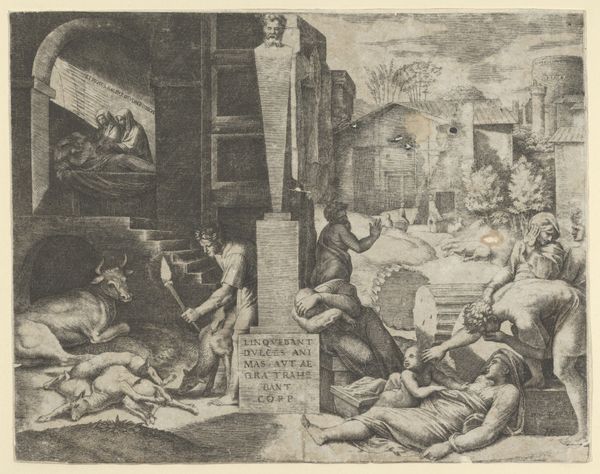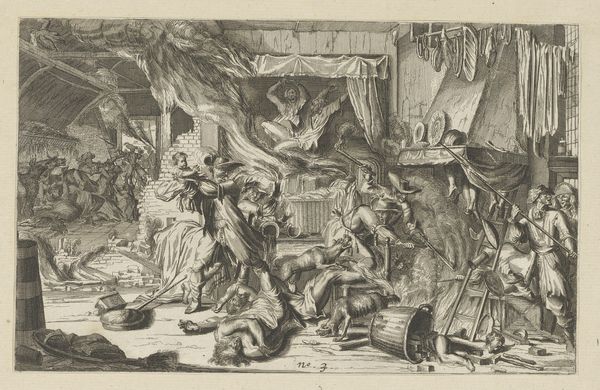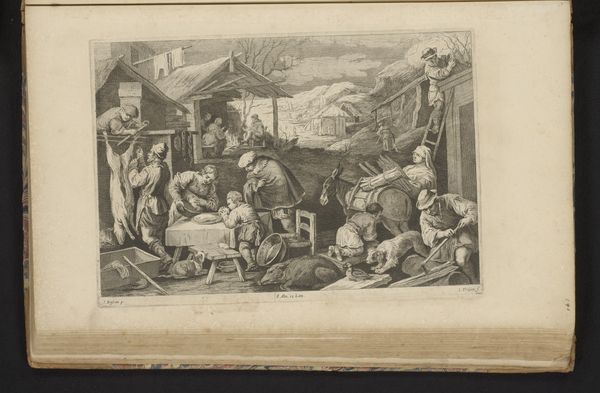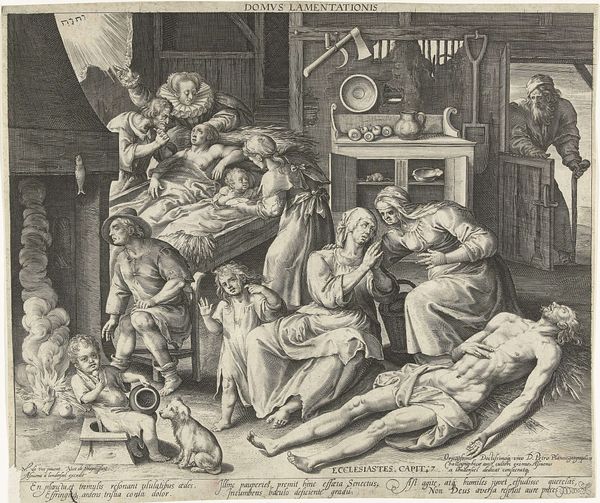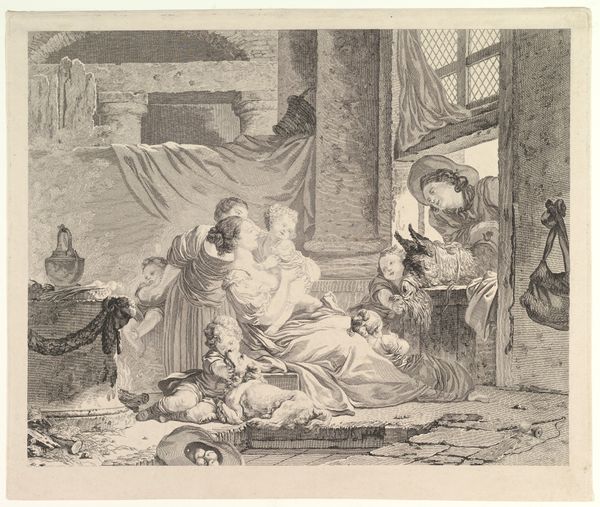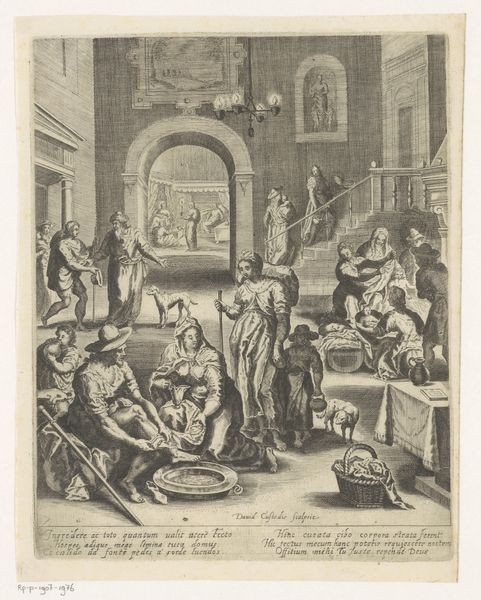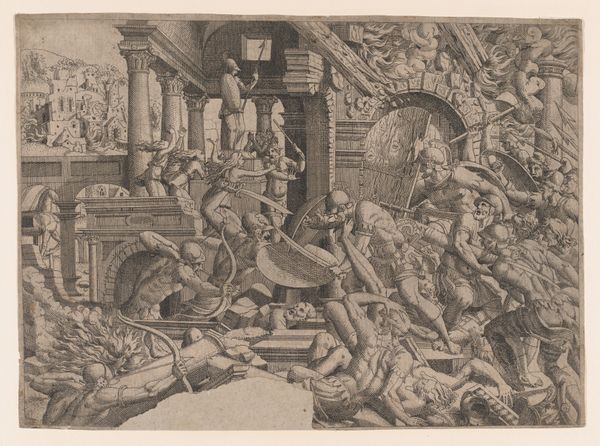
A plague scene at right, a man at left holding a torch illuminating part of the scene at left, ill people at the right 1510 - 1521
0:00
0:00
drawing, print, engraving
#
drawing
#
narrative-art
# print
#
landscape
#
figuration
#
men
#
history-painting
#
italian-renaissance
#
engraving
Dimensions: Sheet: 7 13/16 × 9 3/4 in. (19.9 × 24.7 cm)
Copyright: Public Domain
Marcantonio Raimondi made this engraving, "A Plague Scene," sometime in the early 16th century. It's a powerful image of suffering and death that raises important questions about the social role of art. The scene is divided into two distinct spaces: on the right, we see the plague victims and on the left a man holding a torch. The visual language Raimondi employs is rooted in classical antiquity. The poses and idealized bodies, reminiscent of ancient sculpture, would have been familiar to his Italian audience. The architecture references classical forms. But the horror of the plague brings this classical world into stark confrontation with the realities of disease. The image serves as a commentary on the social structures of its time. It reminds us that art is not created in a vacuum, but is deeply embedded in the social conditions of its time. As art historians, we can research the historical context of this image, looking at medical texts, social histories, and religious beliefs, to gain a richer understanding of its meaning. Ultimately, we see art as contingent, as deeply shaped by its social and institutional context.
Comments
No comments
Be the first to comment and join the conversation on the ultimate creative platform.
